
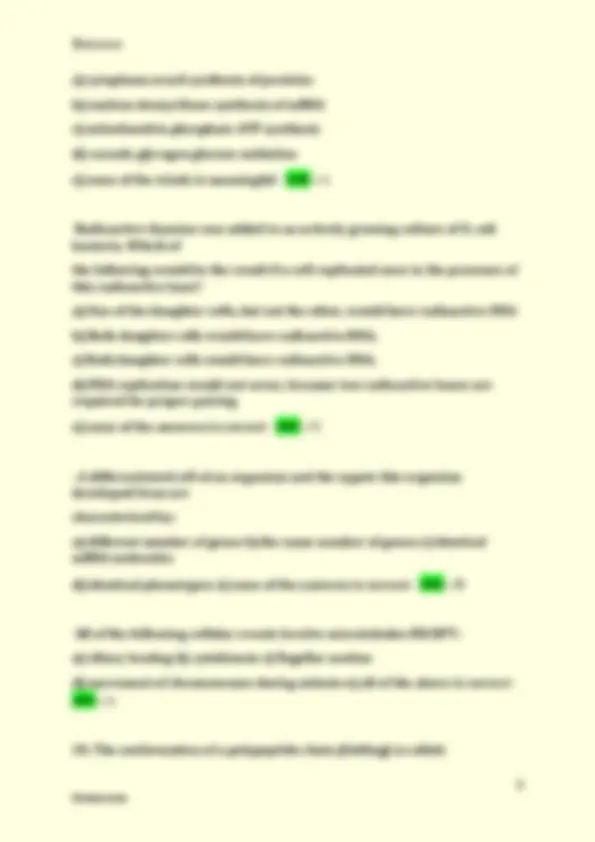
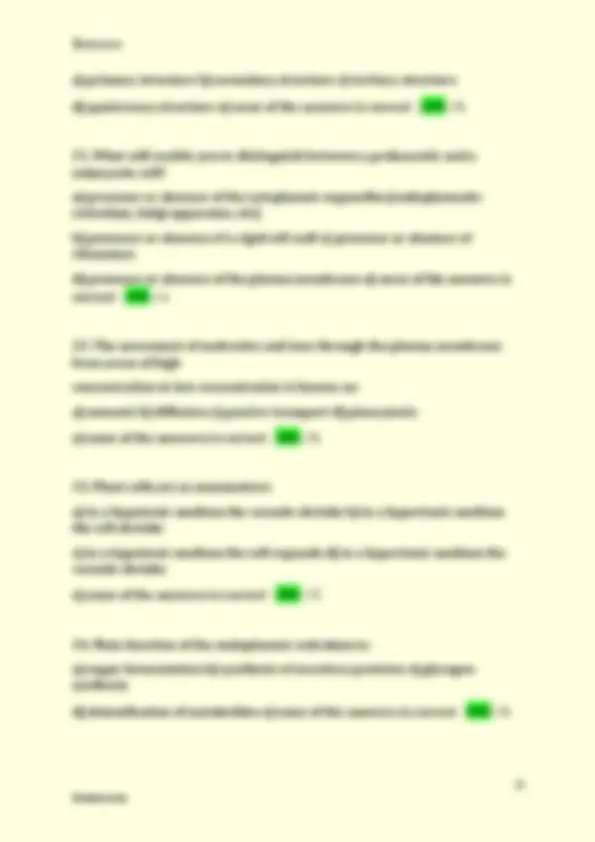
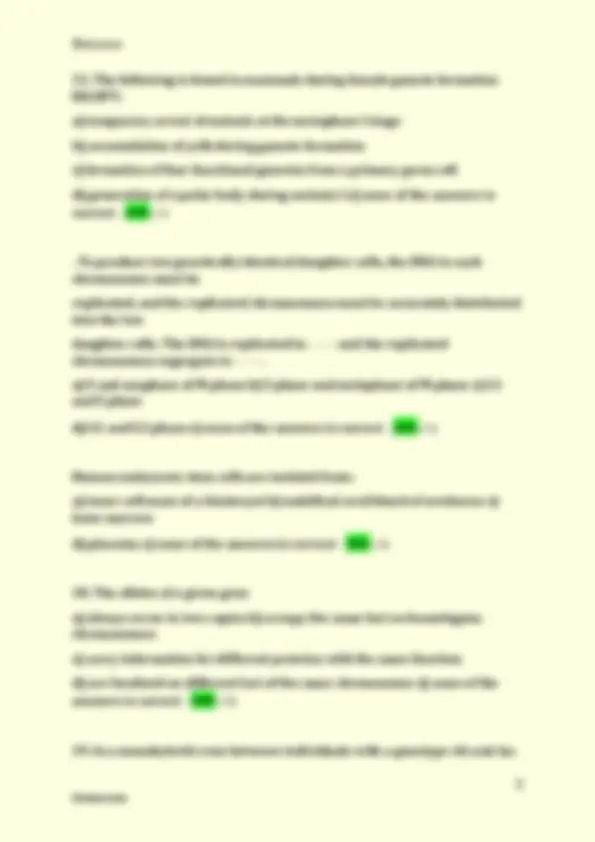
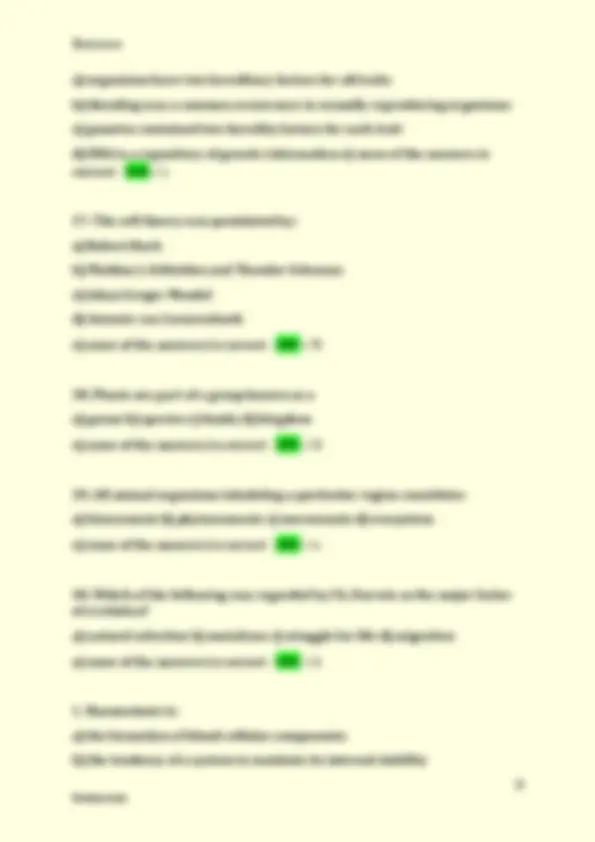
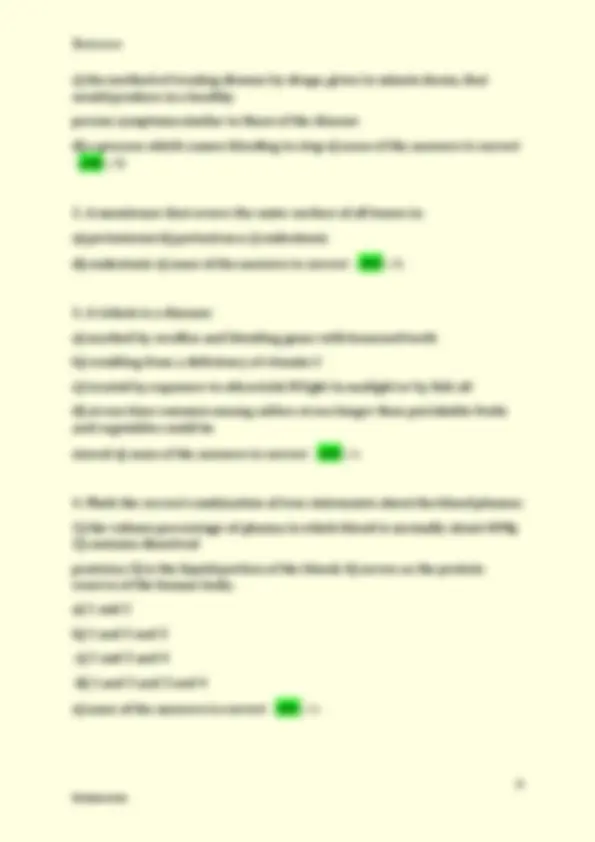
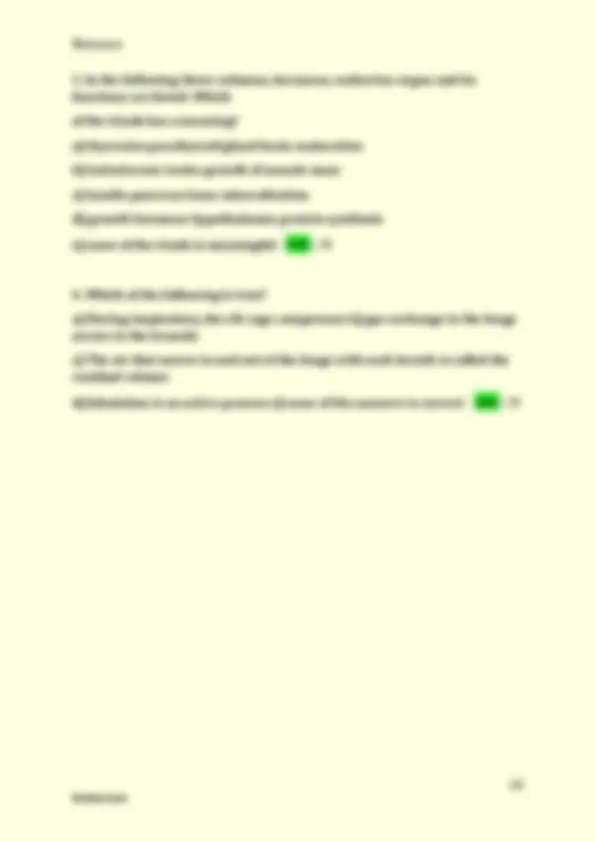


Study with the several resources on Docsity

Earn points by helping other students or get them with a premium plan


Prepare for your exams
Study with the several resources on Docsity

Earn points to download
Earn points by helping other students or get them with a premium plan
Community
Ask the community for help and clear up your study doubts
Discover the best universities in your country according to Docsity users
Free resources
Download our free guides on studying techniques, anxiety management strategies, and thesis advice from Docsity tutors
Most oxygen in the blood is transported a) inside the red blood cells bound to haemoglobin molecules b) transported in the plasma bound to haemoglobin molecules c) inside the red blood cells bound to cytoskeletal proteins d) transported in the plasma as bicarbonate ions e) none of the answers is correct - ANS ✓A What cannot be detected in the final urine in healthy man? a) water b) sodium c) glucose d) urea e) none of the answers is correct - ANS ✓C Which of the following is true? a) the duct that transports the sperm into the urethra is ureter b) sperm are produced in the germinal epithelium of the seminiferous tubules of the epididymis c) the formation of sperm is known as spermatogenesis d) the inability to achieve an erection in known as ejaculation e) none of the answers is correct - ANS ✓C What is NOT a typical secondary sex characteristics in female
Typology: Exams
1 / 10

This page cannot be seen from the preview
Don't miss anything!







Most oxygen in the blood is transported a) inside the red blood cells bound to haemoglobin molecules b) transported in the plasma bound to haemoglobin molecules c) inside the red blood cells bound to cytoskeletal proteins d) transported in the plasma as bicarbonate ions e) none of the answers is correct - ANS ✓A What cannot be detected in the final urine in healthy man? a) water b) sodium c) glucose d) urea e) none of the answers is correct - ANS ✓C Which of the following is true? a) the duct that transports the sperm into the urethra is ureter b) sperm are produced in the germinal epithelium of the seminiferous tubules of the epididymis c) the formation of sperm is known as spermatogenesis d) the inability to achieve an erection in known as ejaculation e) none of the answers is correct - ANS ✓C What is NOT a typical secondary sex characteristics in female a) growth of facial hair b) growth of pubic hair c) enlargement of breasts d) subcutaneous fat deposits, mainly around the buttocks, thighs, and hips e) none of the answers is correct - ANS ✓A
The visual perception is mediated by a) chemoreceptors b) photoreceptors c) thermoreceptors d) mechanoreceptors e) none of the answers is correct - ANS ✓B
a) primary structure b) secondary structure c) tertiary structure d) quaternary structure e) none of the answers is correct - ANS ✓b
DNA triplet? a) CAT b) CUT c) CAU d) GUA e) none of the answers is correct - ANS ✓D
a) organisms have two hereditary factors for all traits b) blending was a common occurrence in sexually reproducing organisms c) gametes contained two heredity factors for each trait d) DNA is a repository of genetic information e) none of the answers is correct - ANS ✓c